Have you tried flashcards for your college or high school subjects yet?
You definitely should give it a go!

Flashcards are a studying tool that makes the memorizing process easier. Flashcards are generally pieces of paper with information on one or both sides. Usually, there is a term or question on one side and an explanation on the other. You can also create digital flashcards using apps and online resources, but the principle remains the same.
In this article, our team has outlined how to create flashcards of different types and use them correctly. There is also a bonus passage at the end, don’t miss it!
🎯 Why Flashcards Are Useful
Flashcards work best for subjects that cover lots of facts and concepts—for example, history. You need to study dates, names, and definitions. Flashcards can help you to learn foreign vocabulary or math formulas.
What makes them so effective?
- Active recall. It means that you have to stimulate your brain for a piece of information. Basically, you look at a flashcard and try to remember what is on the other side. This is the most efficient way to remember something in the long run.
- Spaced repetition. You study the things that are hard to remember more frequently than the easy ones. Just put the flashcards that you have already learned aside and focus on the problematic ones.
- Activation of different types of memory. You use visual memory when you make flashcards, and each time you see them after. For primarily ear-minded people, it works great when you say aloud everything that a flashcard contains.
- Metacognition. You can also use flashcards to practice critical thinking. Divide them into several piles. One pile is the flashcards you know, one is the cards you partially know, and one is all the cards you can’t remember. This is how you can identify your weak spots and focus on these key areas.
📇 Making Paper Flashcards
Now that you understand the value of flashcards don’t underestimate the importance of creating them properly. The process of memorization starts at the very first stage.
Below are the steps for writing out flashcards by hand:
Steps
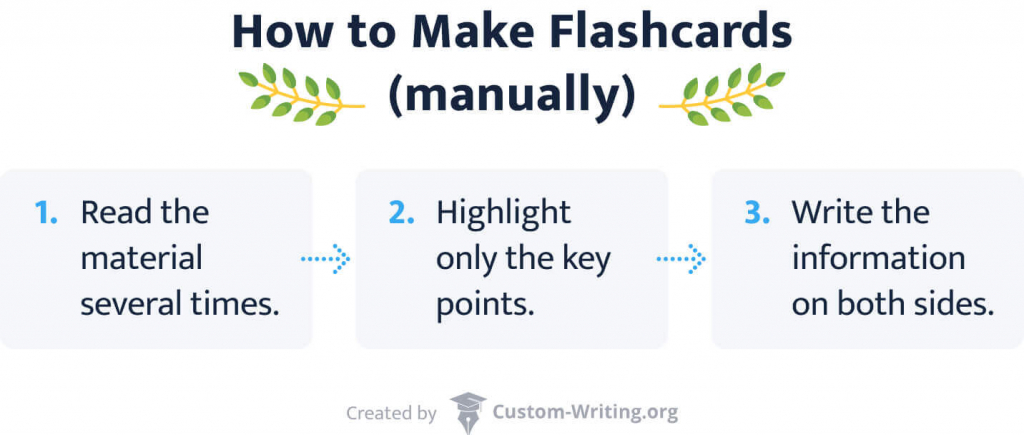
Step 1. Read. Start with reading the material you need to learn. Better do it twice. The first time you just get a general impression. The second time, focus on the key definitions and concepts.
Step 2. Mark. Highlight the things you should learn by heart. Don’t mark everything, be selective. As you have already gone through the information, you should know what is essential.
Step 3. Write. Put the keywords (definitions, dates, questions, or words) on one side of a flashcard. Write their meanings on the other side. Don’t hurry. You should be able to read everything you have written without effort.
Tips
Here are our recommendations for how to optimize your flashcards:
- Use colors. You can use different pens to highlight and structure the information.
- Use shorthand. Create a particular system for making your explanations smaller to save space. All the answers should be readable and easy to understand.
- Use pictures. This tip is the most useful for people with active visual memory—mix pictures and words to diversify your studying.
- Make a new deck of flashcards for each topic. This way, you will not mix up your flashcards.
- Use only necessary information. Focus on the information that will likely be on your exam.
- One question per card. Don’t put too much information on one flashcard. Instead, make your questions more specific.
- Use digital flashcards. If you don’t have enough time for cutting paper and writing, you can use flashcards on your electronic device. There are plenty of pre-made flashcard templates that will save you a lot of time.
📄 How to Make Flashcards in MS Word
Follow this mini-guide to create a set of flashcards in Word:
- Create a new blank document in Microsoft Word.
- In the search bar of templates, type “flashcards.”
- Choose the template that you like most.
- Write out the information you need. Highlight the key points using colors or different fonts.
- Print the flashcards.
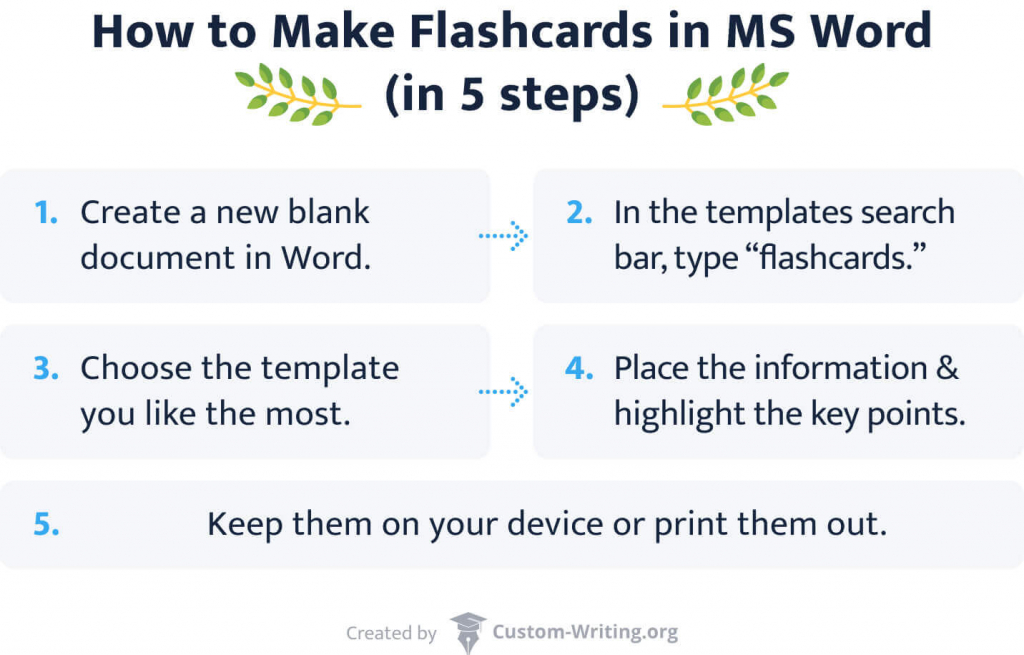
💻 Using Online Software or Apps to Make Flashcards
To make your work even easier, use online software to make your flashcards. Most of them have similar features, just choose the one that suits you best.
Our team has selected some online resources you can try for free:
- Flashcard machine. You can create flashcard decks and share them with others using the web version or mobile app.
- Chegg. Search for flashcards by subject or make the decks yourself. There is also a mobile app.
- Cram. With more than three million members, Cram has a vast database of flashcards. Study using a computer or phone.
- GoConqr. This website offers multiple functions, such as hiding known flashcards and adding images.
- Brainscape. You can use the tool for free or add premium features with a paid subscription.
- Flashcard online. Discover multiple templates for different fields of knowledge here.
- ProProfs flashcards. There are different types of subscriptions, but the tool is free with basic features.
- Quizlet. This one has different learning modes that also include tests, matching, and typing exercises.
- Study Stack. Use this website or app to play games created with your flashcards.
- Ankiweb. It supports audio, images, video, and even scientific markup.
✔️ Using Flashcards Correctly
Whether your flashcards are handwritten or taken from fancy apps, the most important thing is that you memorize critical information and reach your study goals.
Here is a list of rules and tips that will help you use this learning method most effectively:
- Make each set of flashcards unique. For example, you can choose different colored paper for different subjects.
- Regularity is the key. The more times you revisit each stack, the better you will remember the information.
- Use spaced learning. Revise the information you’ve learned in several hours every day or so.
- Don’t fool yourself. You might decide to look at the other side of the paper and think you know the answer. However, if you couldn’t remember it initially, you don’t yet know the material well.
- Use flashcards with a study partner or in groups. Doing this can help make you more motivated to study.
- Don’t throw them away. Once you have passed the test, your flashcards can still help you study related themes or assist you with preparing for finals.
- Mix your flashcards. It might seem easier to remember if you always study them in the same order. You should change the sequence to make it more of a challenge for yourself.
- Try other studying methods. Flashcards are a great tool; however, you will achieve even better results if you use different learning strategies simultaneously. (Check out some other ideas below)
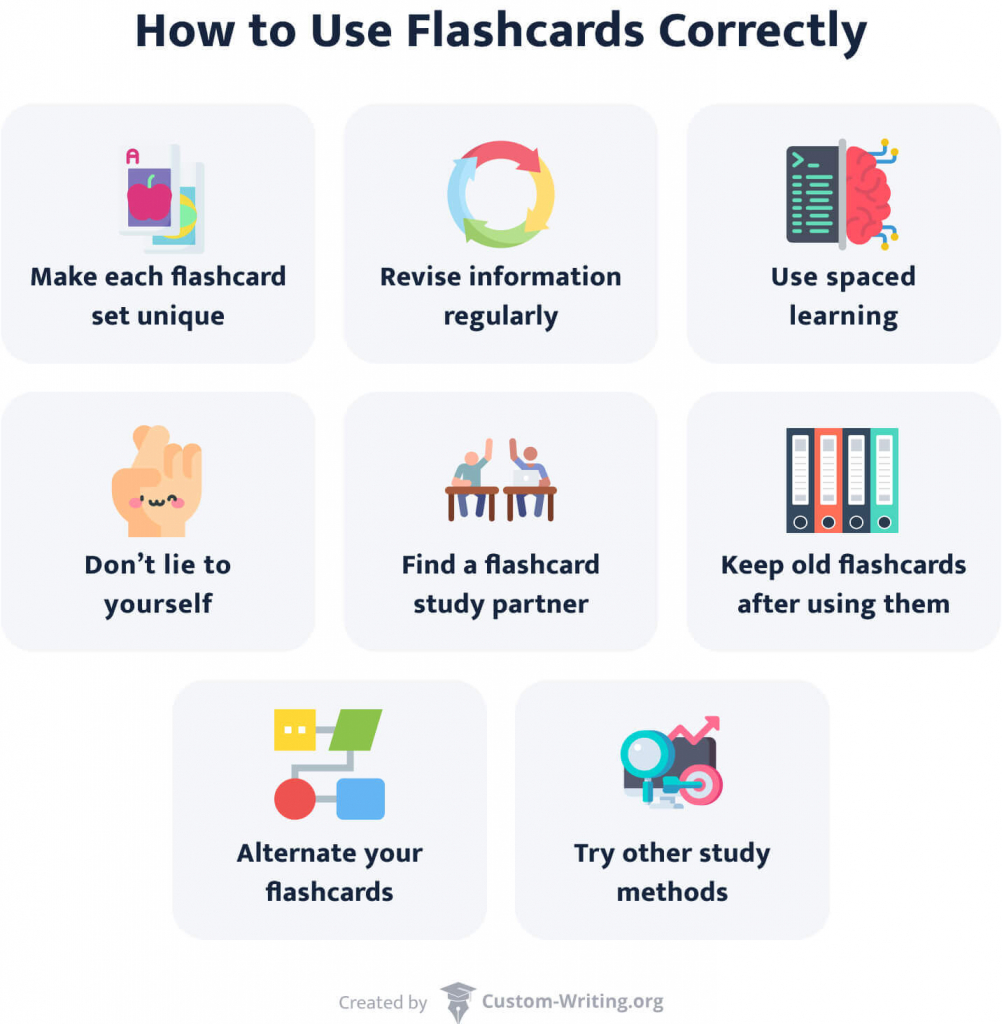
🛠️ Other Study Methods You Could Use
And here is a bonus section from us. Consider using these study methods alongside your flashcards:
- Teach somebody. Explain the concepts that you are trying to learn to somebody or at least pretend to do so. It’ll help when you want to memorize information faster and need to work on formulating your thoughts.
- Take notes. Do this by hand instead of typing to increase mindfulness. This method will work great for you if you have a good visual memory.
- Pomodoro technique. Divide your work into 25-minute intervals with 5-minute breaks in between. You can also take longer breaks after four or five cycles. This technique is useful when you know you will spend several hours studying.
- Practice tests. Take quizzes or tests regularly after you have learned something. It’s an excellent way to find out how well you know the material and identify your weaknesses.
- Self-explanation. Ask yourself questions. For example, “How is this information related to what I already know?”. It’ll help you create meaningful connections to understand the information.
- Abbreviations and acronyms. Create acronyms to help you remember. For example, you need to memorize tomatoes, onions, and potatoes. You can easily combine the first letters and remember the word “TOP.” You need this method if you find it hard to remember sequences of concepts.
- Talk to yourself. Speak aloud instead of just reading and writing. This technique is helpful when you need to reproduce the information you have learned.
- Interleaving. Mix the topics and forms of practice to speed up your learning. Use this method to try something new and surprise your brain.
We hope this article was informative for you. Let us know if you still have any questions; we are happy to help!
Remember to mix up your study techniques and test out different learning methods. This way, you will find what works best for you, stay more productive, and won’t get overwhelmed.
Good luck!


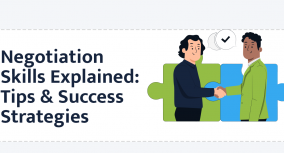



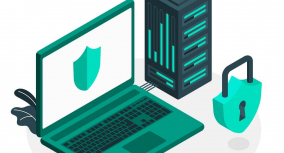
![UniPapers Review—Trustworthy Academic Service [10+ Years of Experience]](https://custom-writing.org/blog/wp-content/uploads/2021/04/close-up-woman-working-laptop-284x153.jpg)



